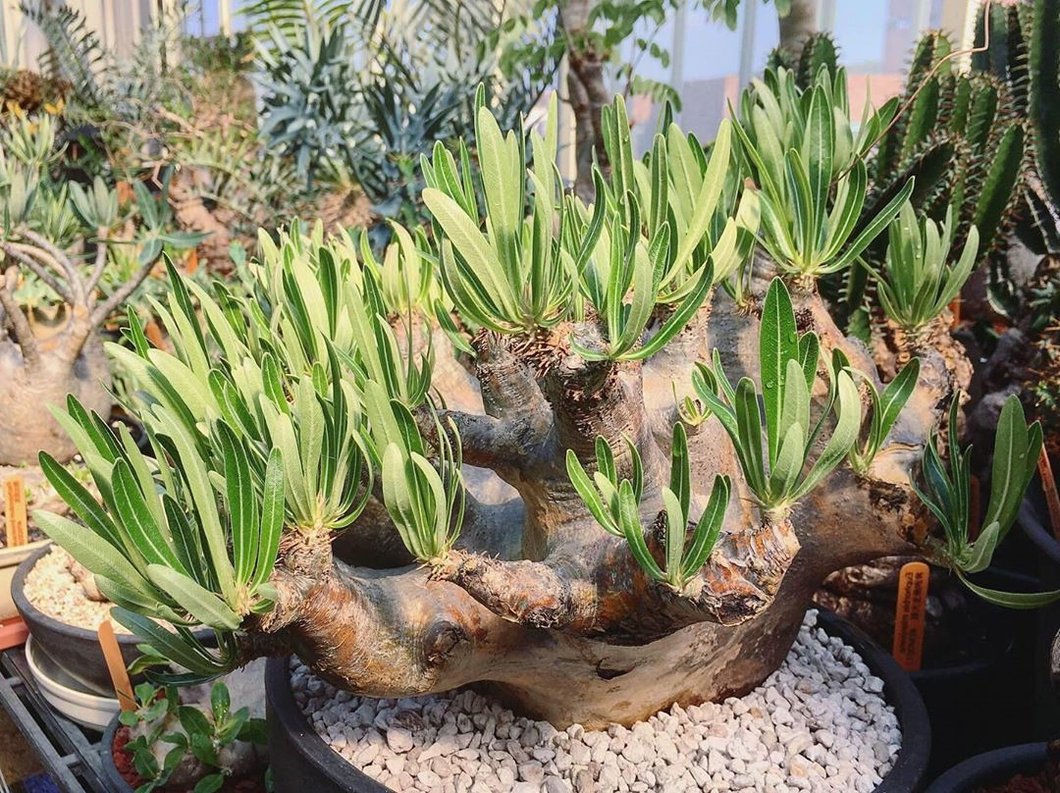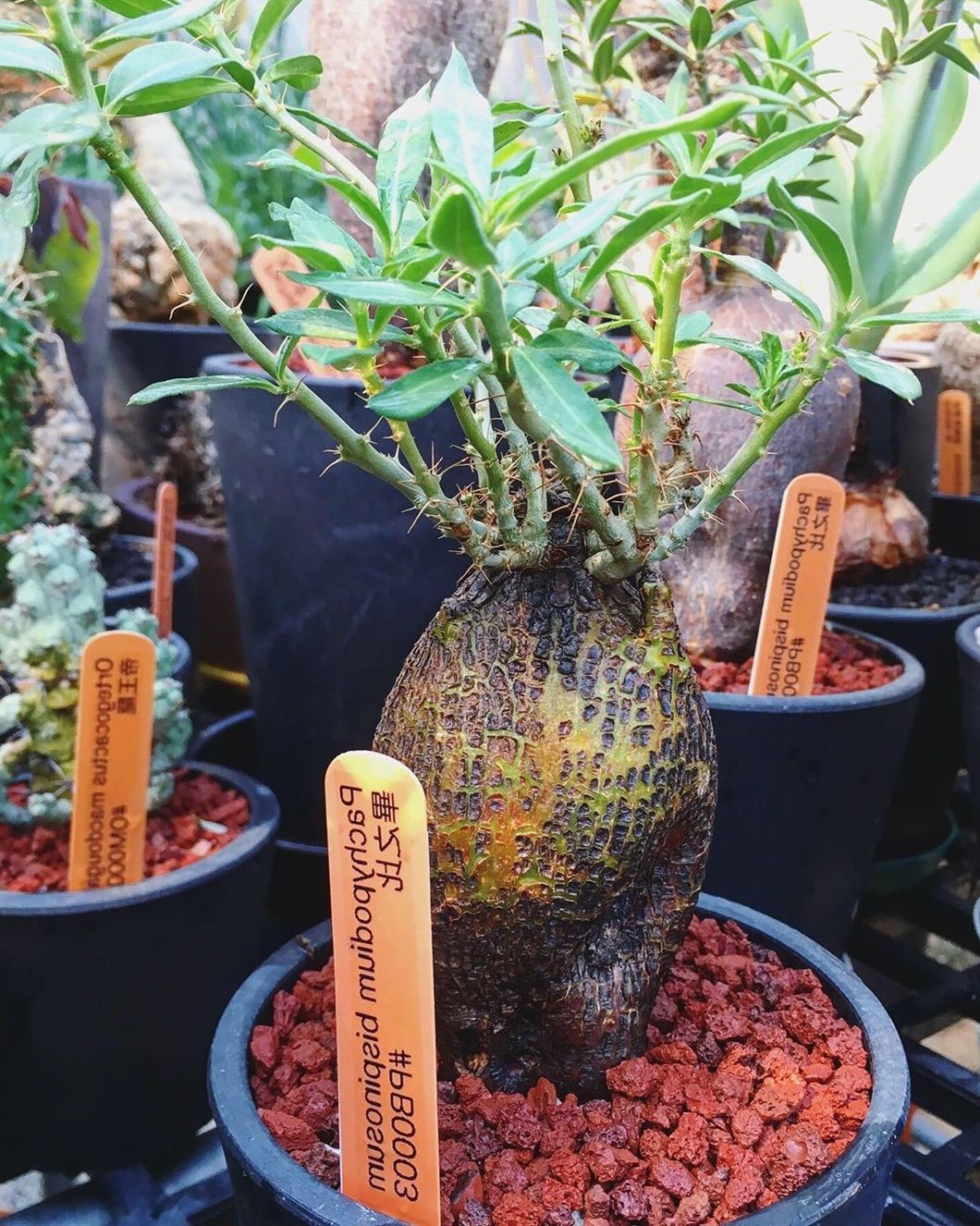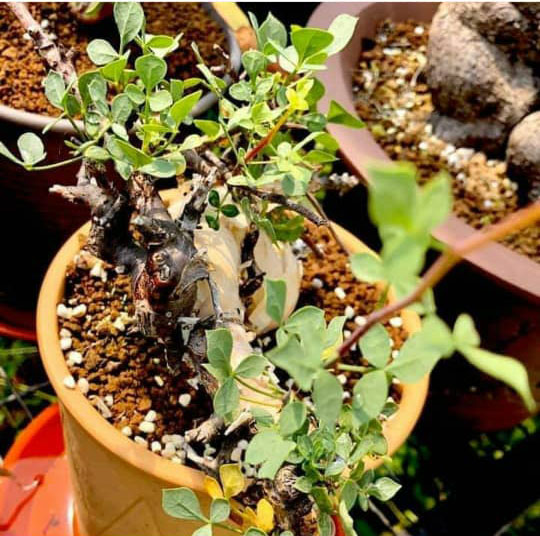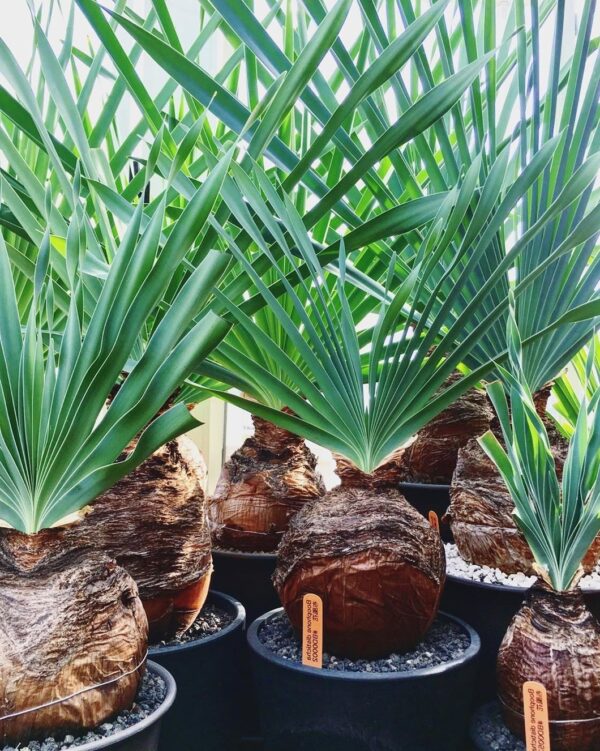Dioscorea elephantipes
$55.00
Buy Dioscorea elephantipes
Dioscorea elephantipes , A deciduous climbing vine, this plant is grown as much for the large woody caudex as it is for the foliage. dioscorea elephantipes for sale
Being summer deciduous this is a drought tolerant plant that actually requires a dry summer. The growth period is from late summer through winter into spring.
Care of dioscorea elephantipes
Further more, this is a plant that requires a hot dry summer to grow well it also needs protection from frosts and freezes.
Drainage and watering are the key to growing Dioscorea elephantipes successfully.
- Plant in a container using a specialist cactus and succulent potting mix with 20 – 20 pumice mixed through to ensure good drainage.
- Also, Fertilise during active growth periods with a 25% strength solution of a liquid fertiliser, seaweed and fish emulsion is ideal.
- As the old foliage dies back you can prune it right down to the caudex itself.
- Provide support the long stems that appear from the caudex in late summer.
The Elephant Foot plant is a slow-growing species that can grow up to 10 feet tall and 3 feet wide. Over time it develops a thick caudex that resembles an elephant’s foot or small tree trunk and has a rough and textured surface.
As the Dioscorea elephantipes elephant’s foot plant matures, it produces tendrils that can climb and attach to nearby structures for support.
The flowers of Dioscorea elephantipes are greenish-yellow and bloom in late fall and early winter. This elephant foot plant is dioecious, with male and female flowers in separate plants. The pale greenish-yellow flowers appear in winter, with male flowers in erect racemes and female flowers in spinescent spikes. They grow on long, slender stalks that emerge from the Dioscorea elephantipes caudex, adding a touch of charm to this already fascinating plant.
Additionally, the elephant’s foot is considered mildly toxic to humans and pets if consumed. The elephant foot plant contains substances called saponins, which can cause gastrointestinal discomfort, nausea, and vomiting if consumed. It’s always best to keep your elephant’s foot succulent out of the reach of curious children and pets to ensure their safety.
With its unique appearance and adaptability, the Elephant Foot succulent is a captivating addition to any succulent collection. Its distinctive caudex and climbing tendrils make it a real eye-catcher. Just be sure to provide it with the right conditions and care, and you’ll have a stunning plant to admire for years to come!
Dioscorea elephantipes Propagation
Usually from seed which are sown into seed trays and covered with a free draining potting mix.
Plant seeds at around 2.5 cm deep and water in once.
Summary Information
- Botanical Name – Dioscorea elephantipes
- Common Name – Elephant’s Foot. Hottentot bread,
- Family – Dioscorea
- Origins – Southern Africa
- Height – The vine will climb to around 1 metre in height.
- Spread – The woody caudex will reach around 45 cm across over time
- Growth rate – Slow.
- Position – Full sun.
- Soil – Free draining
- Flowers – Small yellow to pink.
- Flowering Time – Late summer
- Foliage – Mid to deep green.
- Frost tolerant – Yes
- Drought tolerant – Yes






Reviews
There are no reviews yet.